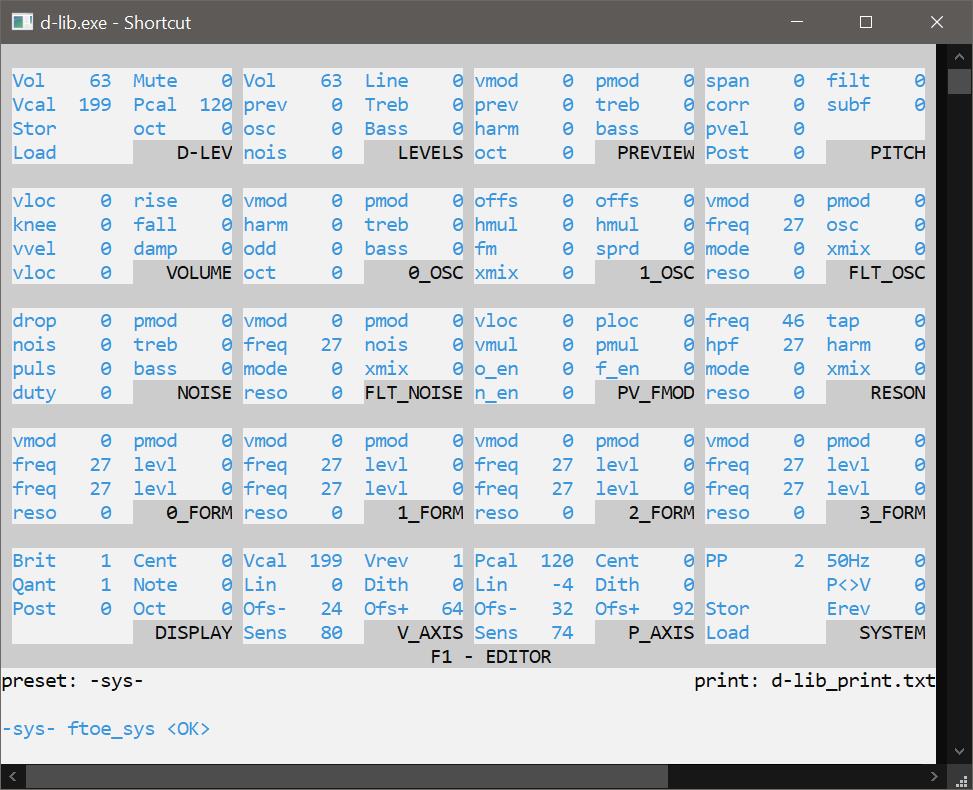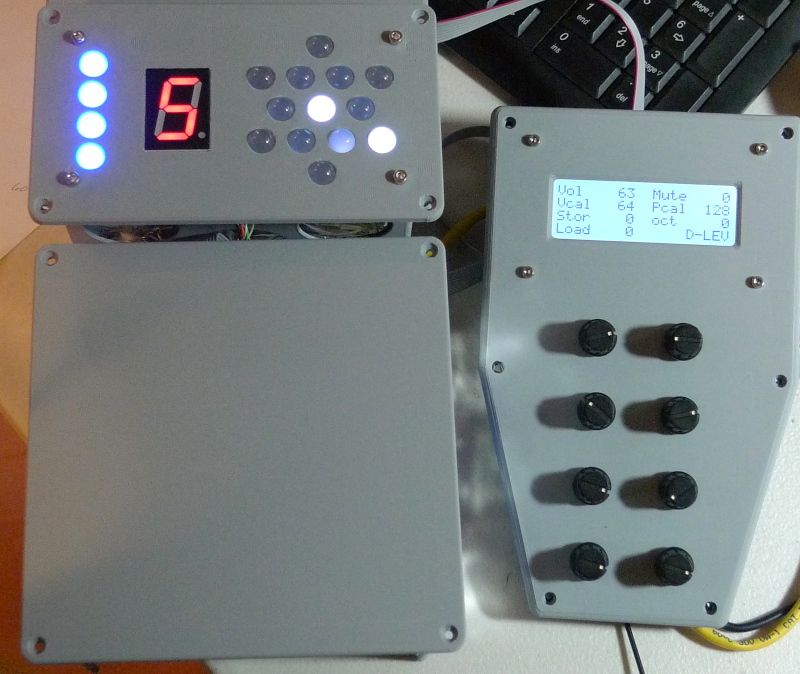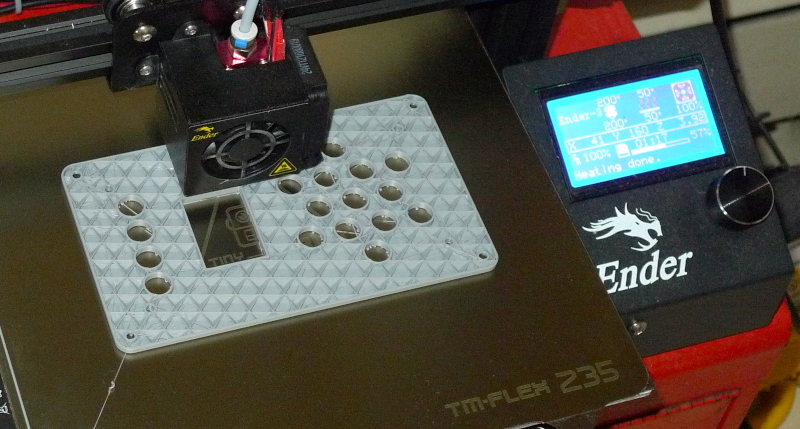I have a bunch of questions, some comments, and a little pleading.
If you want to just quote this and add your replies I will delete the original post to keep the bulk down.
First I have a bunch of questions about certain parameters that I haven't figured out. This image of the librarian main screen is here to help me remember the things I want to ask about.

Could you give a short description of what the following parameters do?
PITCH:
1) filt
2) subf
VOLUME:
3) damp
4) the lower vloc
FLT_OSC:
5) Do vmod and pmod affect the frequency or the mix?
PV_FMOD: (basically everything)
6) vloc
7) ploc
8) vmul
9) pmul
10) o_en
11) f_en
12) e_en
Most of the settings for NOISE and 1_OSC are still a mystery to me but you have either explained them in the past or I can figure them out on my own.
Comments & observations:
Now that the software has stabilized a bit and the hardware is working perfectly I've been spending quite a bit of time learning to make my own presets and just simply practicing. In many cases I've been starting with your presets while comparing the theremin sounds to actual instrument samples and those of recordings that I play along with.
Here are a few interesting observations that I have made, in no particular order. You have no doubt run into some of these things yourself.
1) Instrument presets that sound good by themselves often don't blend well with recordings or even with accompaniment unless the harmonic content is reduced. This is really noticeable when trying to play along with a recording. It's probably the ambience of the recording environment, but I notice the same thing with the sampler outputs. They are simply too bright and have too much presence. So I'm keeping separate "solo" and "play along" versions of some of the strings.
2) Although I've shunned any pitch correction to this point, I've lately been trying it with the miserably-difficult-to-play string presets and I think I like it!
Dialing in just enough to broaden the pitch landings really helps sweeten the sound. I'm conflicted about using it, because the perception (at times mine included) is that pitch correction is something that fixes imprecise technique. But to the contrary, one of the reasons I avoid it is because it actually takes a great deal of precision to be able to use it effectively; you have to be able to hit the right notes to start with or you will get pulled to the wrong adjacent note. But lately it's starting to show its value, and I think I'll get over my theremin purity thing. Those string presets with the resonances sound great but are damn near impossible to play.
We have had the discussion about this before, and I think you and I agreed that if the theremin wants to play with the other kids in the orchestra it needs to be able to hold its own without making the audience occasionally cringe at clinker notes. A thereminist should ideally not have to preface a performance with an apology and explanation that the theremin is very difficult to play, so you should cut them some slack. I don't know what Katica's secret is, but she is the only performer that I can trust to stand up to the orchestra.
3) Pitch Preview: After having tried all kinds of different blends to make it work without confusing me, I think I've settled on settings that are the complete opposite of what I started with. In the beginning I preferred having negative vmod so that the PP would be loud enough to hear when the main audio was at cutoff, and as the main volume came up the PP would drop out. Even after some time that always felt a little weird. So then I went to a constant level for the preview, and that works like the EW Plus except of course the D-Lev has the harmonic and modulation modifiers that make a huge audibility difference.
But lately I've been setting vmod at +20 with the volume (prev) at +50, harm at 10 and my usual pmod at -20 to flatten the perception level. This brings in just a hint of the pitch a little ahead of the main audio, and I never would have believed it but this seems the most natural. The D-Lev pitch preview functionality has something for everyone, and I finally have gotten used to using it regularly now (through a monitor, not an earpiece).
4) Something I just came to realize a few days ago: the D-Lev is largely immune to proximity effects of adjacent equipment. My equipment cluster is getting pretty dense around the theremin, and this would be having quite a large effect on the analog theremins. None of this seems to bother the D-Lev. I guess it just calibrates out during ACAL.
5) Along the same lines as 4) above, I came to notice that the body of the theremin has a large and quite obvious shielding effect that further isolates the volume and pitch sides. I've always been amazed at pitch linearity and how you can still have normal span octave jumps even with your hand pulled up against your chest. Since I play with quite a large pitch field (pitch antenna at tip of thumb) I started wonder why the volume hand never seems to pull lower pitches as it does on the EW and Subscope. It turns out that lateral movements of the volume hand (orthogonal to normal playing) have virtually no effect on pitch until you start to move past approximately the midpoint of the theremin body toward the pitch antenna. It's a surprisingly sharp barrier, too. The analog theremins are always shifting around at low pitches when you have large volume changes, despite the orthogonal movements.
I can't think of any other comments at the moment, but I have...
A Request and a Plea for "pmod" control over "reso":
After a lot of time trying everything available in the toolbox for creating reasonably realistic string sounds, I feel that the resonator needs some added functionality. The biggest issue is that the "reso" parameter currently has to be a compromise. It has to be high enough to sound like a real instrument and keep the bass from sounding too sawtoothy but low enough to prevent too much sizzle or change in timbre of adjacent notes at higher pitches. I think this would be much improved if "pmod" could be applied to "reso" so that the resonance could be throttled back at higher pitches. I've tried everything I could think of to allow a resonant bass without thin and edgy highs: FLT_OSC, pmod and vmod applied to 0_OSC, etc. I've also manually tried to adjust "mix" with pitch, but it seems that modulating resonance with pitch is more effective.
In direct comparison with my keyboard sampler it also seems that a slight pmod influence over the resonator frequency could also be beneficial, but if trying to keep things simple I think that pmod>reso is more important. But where do you put it, even if you could do it easily?
That's enough for one post, I think ![]() .
.




